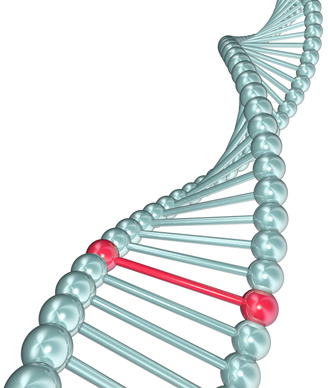Targeted Therapy Combo Shows Benefit in Breast and Ovarian Cancer
Combination treatment with the PARP inhibitor olaparib plus the PI3K inhibitor BKM120 showed a benefit in subsets of breast cancer and ovarian cancer patients.
Image © iQoncept / Shutterstock.com

Combination treatment with the poly(ADP-ribose) polymerase (PARP) inhibitor olaparib plus the phosphatidylinositol 3-kinase (PI3K) inhibitor BKM120 resulted in clinical activity in women with triple-negative breast cancer and those with high-grade serous ovarian cancer.
Patients that had BRCA-mutant and BRCA wild-type tumors responded to the treatment.
The results of this phase I trial were presented at a press briefing at the American Association for Cancer Research (AACR) Annual Meeting, held April 18 to 22 in Philadelphia.
The rationale for the combination therapy came from a Stand Up To Cancer project that found that olaparib plus BKM120 were more effective in mouse models of BRCA-mutant breast cancer and BRCA wild-type triple-negative breast cancer compared with either drug alone.
Ursula A. Matulonis, MD, director and program leader of medical gynecologic oncology at Dana-Farber Cancer Institute in Boston, and colleagues tested whether this observation would hold true in the clinic.
Seventy patients were enrolled in the dose-escalation phase of the trial-24 with breast cancer and 46 with ovarian cancer. Fifteen of the breast cancer patients had triple-negative disease and 41 of the ovarian cancer patients had high-grade serous tumors. Fifty-eight percent (14) of the breast cancer patients and 77% (33) of the ovarian cancer patients had germline BRCA mutations. The median ages were 47.5 and 60 years in the breast and ovarian cancer cohorts, respectively.
After testing 10 different dose combinations, the maximum tolerated dose was determined to be 50 mg once daily of BKM120 and 300 mg twice daily of olaparib.
Twenty-one percent of the breast cancer patients (5 of 24) and 26% of the ovarian cancer patients (12 of 46) had a partial response to the combination therapy. Of the five breast cancer patients who responded, four had triple-negative disease and one had estrogen receptor–positive disease. Another 48% (22) of ovarian cancer patients and 50% (12) of breast cancer patients had stable disease.
Similarities between triple-negative breast cancer and high-grade serous ovarian cancer included germline BRCA mutations, sensitivity to platinum agents, and tumor genomes with high copy number alterations.
Dose-limiting toxicities were grade 3 depression in one patient and a grade 4 liver function test in another patient. Common low-grade toxicities included nausea, fatigue, hyperglycemia, anorexia, and depression. Grade 4 hematologic malignancies included one incidence each of anemia and neutropenia.
Currently, 12 patients with triple-negative breast cancer and 11 patients with ovarian cancer are enrolled in the dose expansion cohort at the maximum tolerated dose.
Matulonis said that the next step is to identify biomarkers to find which patients are most likely to benefit from this targeted therapy combination.